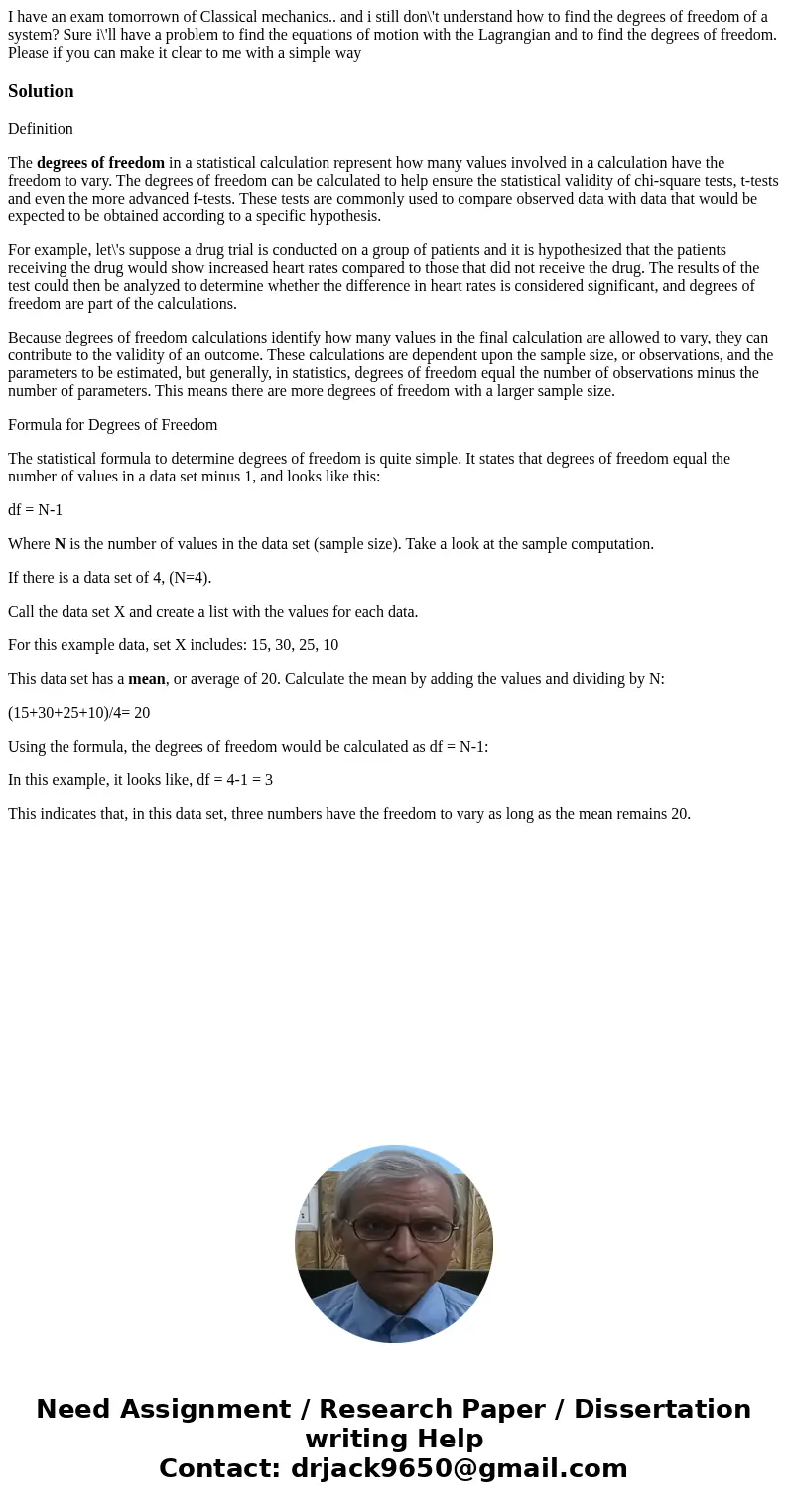I have an exam tomorrown of Classical mechanics and i still
I have an exam tomorrown of Classical mechanics.. and i still don\'t understand how to find the degrees of freedom of a system? Sure i\'ll have a problem to find the equations of motion with the Lagrangian and to find the degrees of freedom. Please if you can make it clear to me with a simple way
Solution
Definition
The degrees of freedom in a statistical calculation represent how many values involved in a calculation have the freedom to vary. The degrees of freedom can be calculated to help ensure the statistical validity of chi-square tests, t-tests and even the more advanced f-tests. These tests are commonly used to compare observed data with data that would be expected to be obtained according to a specific hypothesis.
For example, let\'s suppose a drug trial is conducted on a group of patients and it is hypothesized that the patients receiving the drug would show increased heart rates compared to those that did not receive the drug. The results of the test could then be analyzed to determine whether the difference in heart rates is considered significant, and degrees of freedom are part of the calculations.
Because degrees of freedom calculations identify how many values in the final calculation are allowed to vary, they can contribute to the validity of an outcome. These calculations are dependent upon the sample size, or observations, and the parameters to be estimated, but generally, in statistics, degrees of freedom equal the number of observations minus the number of parameters. This means there are more degrees of freedom with a larger sample size.
Formula for Degrees of Freedom
The statistical formula to determine degrees of freedom is quite simple. It states that degrees of freedom equal the number of values in a data set minus 1, and looks like this:
df = N-1
Where N is the number of values in the data set (sample size). Take a look at the sample computation.
If there is a data set of 4, (N=4).
Call the data set X and create a list with the values for each data.
For this example data, set X includes: 15, 30, 25, 10
This data set has a mean, or average of 20. Calculate the mean by adding the values and dividing by N:
(15+30+25+10)/4= 20
Using the formula, the degrees of freedom would be calculated as df = N-1:
In this example, it looks like, df = 4-1 = 3
This indicates that, in this data set, three numbers have the freedom to vary as long as the mean remains 20.

 Homework Sourse
Homework Sourse